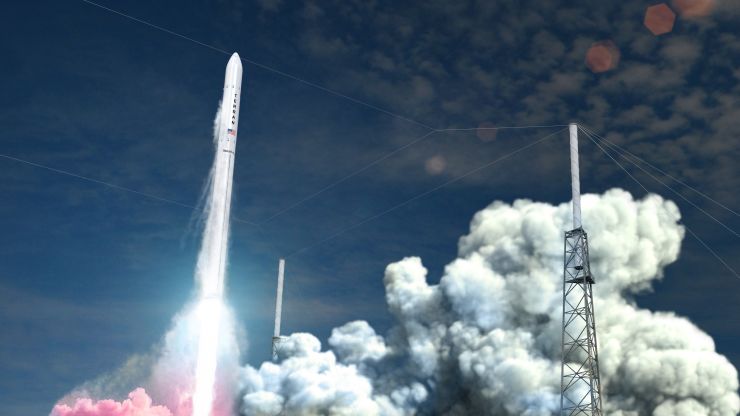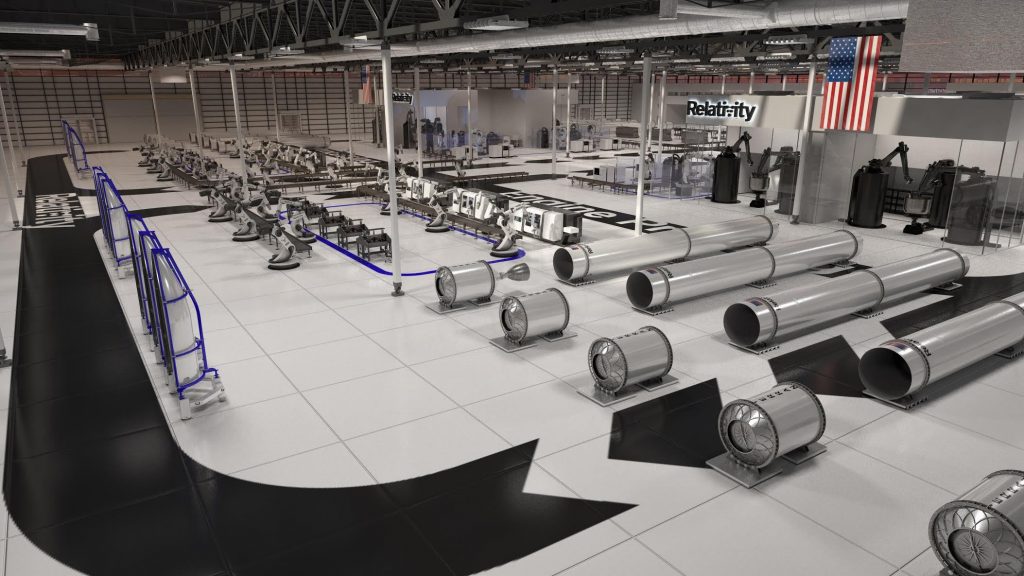Californian 3D printed rocket manufacturer and launch service provider Relativity Space has been granted permission to expand facilities at NASA’s Stennis Space Center in Hancock County, Mississippi. In agreement with NASA and the Mississippi Development Authority, the company will have exclusive use of up to 220,000 square feet of space to build a robotic 3D printing factory and test facility for the Terran 1 rocket.
“We are excited to partner with NASA and the Mississippi Development Authority to bring our patented 3D printing rocket platform to Hancock County,” said Jordan Noone, co-founder and CTO of Relativity.
“We believe this groundbreaking technology is the future of aerospace manufacturing, and we look forward to bringing this innovation to the Gulf Coast.”
Rockets ready for launch
Founded in 2015, Relativity Space’s mission is to “deploy and resupply satellite constellations” and reinvent the way rockets are made. Like its 2002 forerunner SpaceX, and many other private space exploration companies, Relativity believes “in a more inspired future with people thriving both on Earth and on Mars.” For the company, this aim will be achieved in part by the ability to provide compacted 3D printing systems capable of rapidly manufacturing vehicles for return to Earth.
Over the past four years, Relativity has managed to raise an incredible amount of money for its mission. As of April 2019, the company had raised a total of $45 million from investors including support from startup accelerator Y Combinator and independent businessman and owner of the Dallas Mavericks basketball team Mark Cuban. Most recently, Realtivity entered into launch agreements with satellite rideshare and mission management provider Spaceflight, and Canadian communication satellite maker and operator Telesat.
The first orbital test launch from Relativity is expected by the end of 2020, with plans to enter commercial service in 2021.

A 3D printed rocket in 60 days
The Terran 1 is Relativity’s first ever rocket. By applying 3D printing to its production, the company has succeeded in reducing the Terran’s part count by 100 in a highly simplified supply chain. The robot-arm powered Stargate 3D printer is the equipment Realitivity uses for fabrication. With it, the company is currently targeting production lead times of less than 60 days.
The Stargate 3D printer will operate at the core of Relativity’s new operations at Stennis Space Center. By completion, Relativity expects to create 200 jobs at the Stennis site, and will invest $59 million in the state of Mississippi. Looking to expand Stennis’ facilities, the Mississippi Development Authority provided Relativity with an incentive package for the move. Tobias Duschl, VP of Operations at Relativity, concludes, “This partnership will foster innovation, investment, and growth in Mississippi.”
“The integration of our 3D printing rocket production and testing facilities at one site will also enable Relativity to offer greater flexibility to commercial and government entities needing faster, more frequent, and lower cost access to space.”

Subscribe to the 3D Printing Industry newsletter, like us on Facebook and follow us on Twitter for all the latest 3D technology news. Visit 3D Printing Jobs for new opportunities in additive manufacturing.
Winners of the 2019 3D Printing Industry Awards have now been announced. Thank you to all who voted.
Featured image shows a rendering of Relativity’s autonomous rocket factory at NASA Stennis Space Center in Mississippi. Image via Relativity Space/Business Wire



